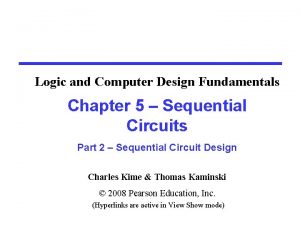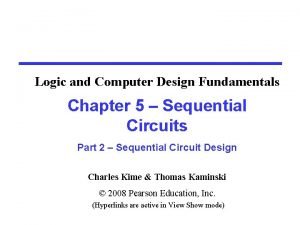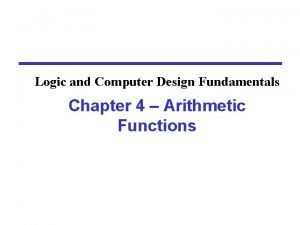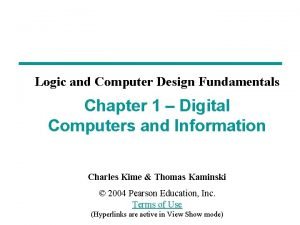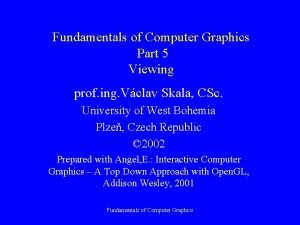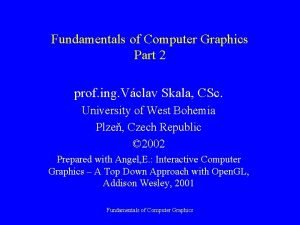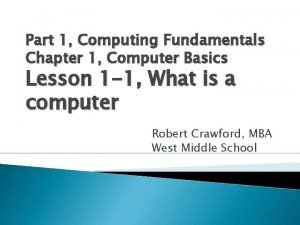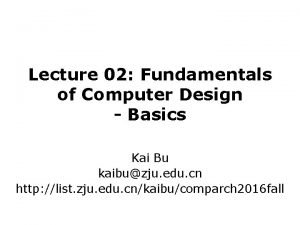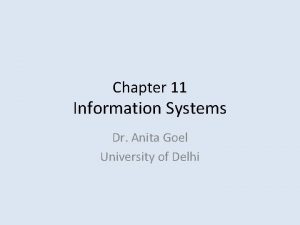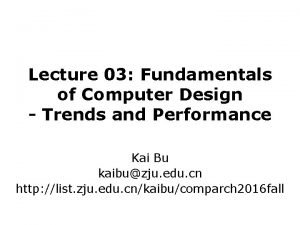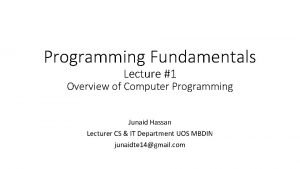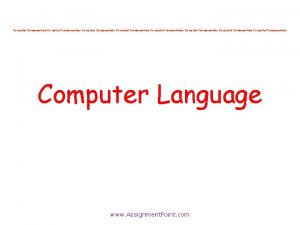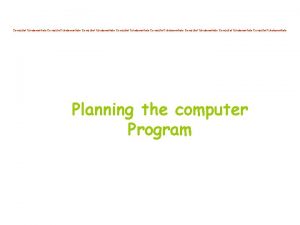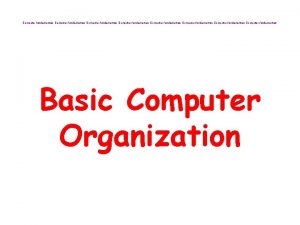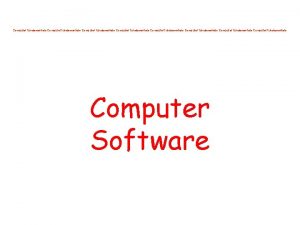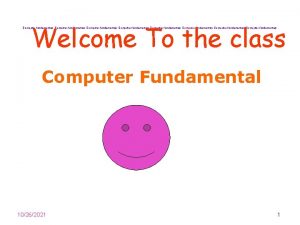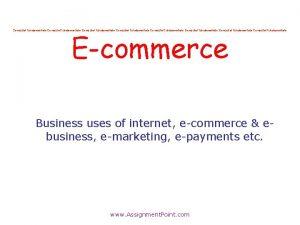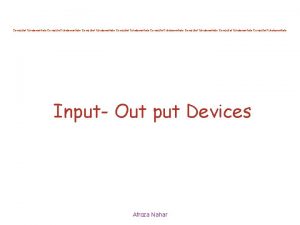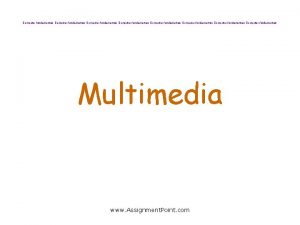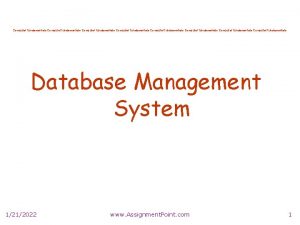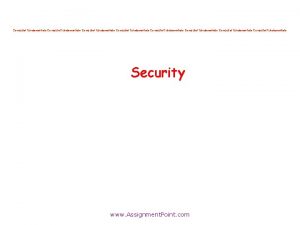Computer Science Fundamentals Intro to Computer Science 06














- Slides: 14

Computer Science Fundamentals Intro to Computer Science 06 -19336. 1 & 06 -19323. 1 – part i 1 – Ata Kaban School of Computer Science The University of Birmingham

Module Structure • Lectures: – Tuesdays 4 pm-5, LG 33 Learning Centre – Wednesdays 11 am-12, LT 2 Sport&Ex • Module Syllabus page http: //www. cs. bham. ac. uk/internal/modules/2007/19336. html http: //www. cs. bham. ac. uk/internal/modules/2007/19323. html • Assessment: 100% by exam

Resources • Module home page: contains the handouts – http: //www. cs. bham. ac. uk/~axk/FCS. htm • Textbook (for part i 1) Les Goldschlager, Andrew Lister: Computer Science. A Modern Introduction. Prentice Hall, 1987. • Your Own Notes taken during lectures ! • Lecturer’s office hours – Friday 2 -3 pm UG 32 Comp Sci – Use these to ask me questions for clarification when needed – Don’t ask me to repeat the lecture(s) for you because I won’t

Content • Part i 1: – Introductory overview of computer science using the notion of algorithm as the unifying concept • Part i 2: – Computer hardware structure

The computer revolution • Industrial revolution – Augmentation of man’s physical powers, amplification of man’s muscle – Pressing a button cause a large machine to stamp a pattern into a metal sheet. – Certain repetitive aspects of man’s physical activities were replaced by machines. • Computer revolution – Augmentation of man’s mental powers, amplification of man’s brain – Pressing a button cause a machine to make complex decisions. – Certain repetitive aspects of man’s mental activities are being replaced by machines.

Computers and algorithms • A computer – is a machine which can carry out routine mental tasks by performing simple operations at high speed. • An algorithm – describes the method how a task is to be accomplished. – consists of a finite sequence of steps. – which if performed will result in a process being carried out. • A processor – (e. g. a person or a computer) carries out a process by executing the algorithm which describes it.

Examples

Major hardware components of a computer A computer is simply a particular kind of processor. Its major components are: – Central processing unit (CPU): performs basic operations – Memory (MEM): algorithm and data – Input and output devices (I/O devices): communication

Characteristics of a computer

Example: Airline reservation system

Programs and programming languages • An algorithm must be expressed in such a way that the processor can both understand execute it (e. g. cook/recipe and musician/score). • If the processor is a computer then the algorithm must be expressed in a form called program. • A program is written in a programming language. The activity of writing a program is called programming. • Each step of an algorithm is expressed by a statement in the program. A program consists of a finite sequence of statements, each of which specifies certain operations that the computer is to perform.

Executing a program on a computer • Machine languages: – statements can directly interpreted by the computer – programming is tedious • High level languages: – programs have to be translated to machine language; e. g. C++, Java

The software-hardware hierarchy

The importance of algorithms • We have learnt that to carry out a process on a computer we must: 1. Design an algorithm which describes how the process is to be performed 2. Express the algorithm as a program in a suitable programming language 3. Get the computer to execute the program • Without an algorithm there can be no program, and without a program there is nothing to execute. • Algorithms are independent of the language in which they are expressed and the computer which executes them.
 Chapter 1 intro to forensic science
Chapter 1 intro to forensic science Forensic science fundamentals and investigations chapter 6
Forensic science fundamentals and investigations chapter 6 The fundamentals of political science research 2nd edition
The fundamentals of political science research 2nd edition Logic and computer design fundamentals
Logic and computer design fundamentals Logic and computer design fundamentals
Logic and computer design fundamentals 010000112
010000112 Logic and computer design fundamentals
Logic and computer design fundamentals Fundamentals of computer graphics
Fundamentals of computer graphics Sierpinski gasket in computer graphics
Sierpinski gasket in computer graphics Computer fundamentals chapter 1
Computer fundamentals chapter 1 Fundamentals of computer design
Fundamentals of computer design Computer fundamentals by anita goel
Computer fundamentals by anita goel Fundamentals of computer design
Fundamentals of computer design Computer security fundamentals 4th edition
Computer security fundamentals 4th edition Programming fundamentals 1
Programming fundamentals 1



